Brining Meat to Keep it Juicy
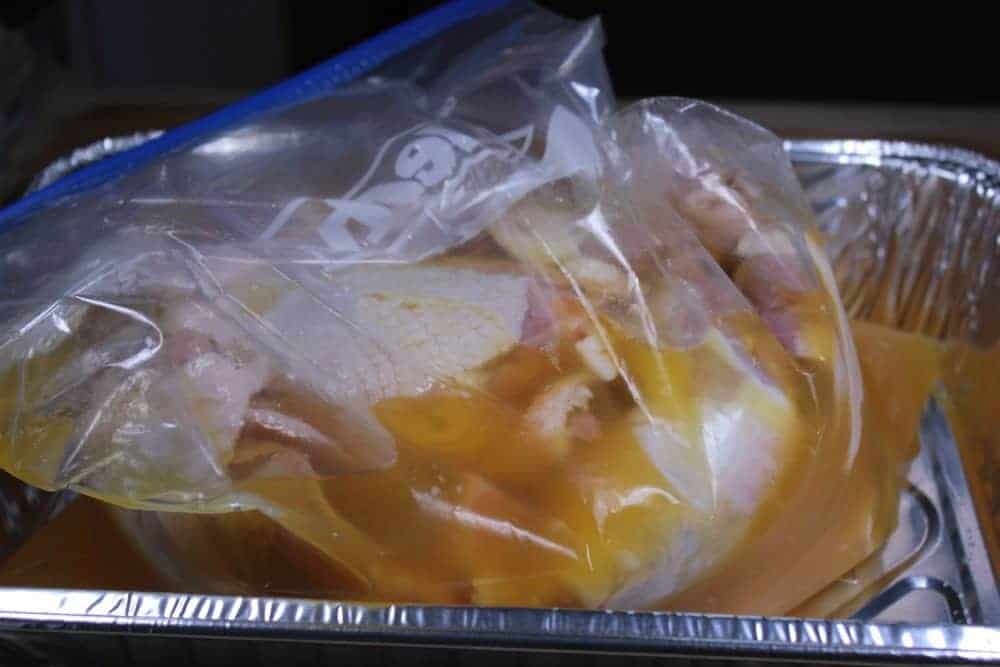
Smoking-Meat.com is supported by its readers. We may earn an affiliate commission at no extra cost to you if you buy through a link on this page.
Read this article without ads
Throughout this website and especially on poultry, I am always encouraging folks to brine the meat they are getting ready to smoke but what exactly is brining meat? That's exactly what I aim to explain on this page.
After reading this page you should know what brining meat is, why you should brine meat and most importantly, how to get the job done in a way that brings results.
Brining meat is simply placing salt on meat or putting meat down into very salty water and allowing that salt to go through a series of natural scientific processes to find it's way inside of the meat.
In it's most basic form, these processes seek to equalize the amount of salt on the outside of the meat with the amount of salt on the inside.
As you very well know there is little if any salt inside the turkey therefore the salt and water is drawn deep into the meat fibers of the meat creating the process we call meat brining. The really neat thing about this process is that you can add other spices, herbs, flavorings, etc. down into the bucket with the salt water solution and some of those flavors seem to get drawn in as well and thereby flavor the meat.
This wet brining process seems to work the best on poultry and fish.
Back in the day, meat and fish was covered in salt to preserve it since there was no refrigeration however, nowadays, we brine meat to improve flavor and to increase or retain the moisture level inside of the meat.
During brining, moisture gets drawn into the meat fibers and it gets trapped there. During the cooking process, moisture loss happens.. it's a given. A brined piece of meat has the moisture trapped inside and while it also experiences moisture loss during the cooking process, it ends up more moist and juicy than it would have been otherwise.
The standard liquid to salt ratio is 1:16 or 1 cup of Kosher salt per gallon of liquid. I usually need around 2 gallons of brine to cover a 12 pound turkey and therefore I use 2 cups of kosher salt and 2 gallons of liquid.
Any seasonings you choose to add after the base solution should contain little or no salt else the brining meat you are using can become more salty than intended.
First you need the liquid (it doesn't have to be water). It can be juice, milk, wine, soda pop, etc. In the following example, I used a juice mixture.
The juice is poured into the pitcher. Looks like I used ½ gallon here so I added ½ cup of kosher salt.
The salt is stirred into the liquid until it is completely dissolved.
A ziptop bag makes a good brine container. In the picture above, the chicken was placed into a gallon sized bag.
The brine is poured into the bag to cover the chicken.
Be sure to press out as much of the air as you can before zipping the bag closed.
Bags are not always 100% leak proof so I recommend placing the bag into a large bowl or pan just in case.
Most things like chicken pieces can be brined for as little as just a few hours or overnight.
Here's some turkey/poultry brine recipes
You can get real creative with meat brining and add pinches and dashes of this and that until you find the right combination. On the recipe above you can leave out the crab boil for a less Louisiana flavor. Try a dash or two of cinnamon for a nice twist. Wanna spice things up a bit…add a few teaspoons of cayenne or run a couple of jalapenos through the food processor and pour the puree into the mix…oh yeah!
After the meat has brined for 10-12 hours take it out of the bucket, rinse the meat real well making sure there is no traces of salt left on the outside of the brining meat and discard the brine. Smoke (or bake if you must) as usual.
Dry brining is a slightly different animal since it uses no extra water. This is simply done by sprinkling a generous amount of kosher salt all over a piece of meat such as a steak, pork chop, lamb chop, etc.
Most professionals recommend about ½ teaspoon of salt per pound of meat. I usually use closer to ¾ teaspoon per pound when I measure.. most of the time I just “eyeball” it.
In this example you can see the type of salt coverage that I use and recommend.
Set the steak(s) on a plate or pan and allow it to sit in the fridge for at least 2 hours but overnight is a lot better. The thicker the steak or meat, the longer it should be allowed to sit.
You can let meat dry brine up to 48 hours. After that it seems to start affecting the texture of the meat too much.
First the salt begins to draw moisture to the surface. This happens in about 10 minutes.
The moisture causes the salt to dissolve and the mixture becomes a salty slurry. This happens within the first 30-45 minutes
This salty moisture is then absorbed back into the meat. This absorption process has a good start after only a couple of hours however, overnight is best for full effect.
A steak that has been dry brined will taste slightly salty and flavorful and if you let it go long enough, all the way through to the center.
When the dry brining process is finished, it is ready to cook.
It is not necessary to rinse the meat after this dry brining process as the salt has been absorbed.
Unlike wet brining, we do not add extra moisture when dry brining meat however, the same thing that happens when wet brining, happens during dry brining.
The protein strands unwind, the moisture that is absorbed back into the meat get trapped inside of these protein strands and during cooking, less moisture cooks out of the meat than it normally does. This means you end up with a more juicy steak that is also more flavorful.


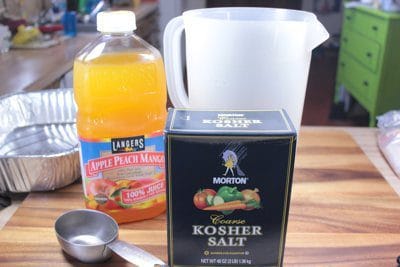
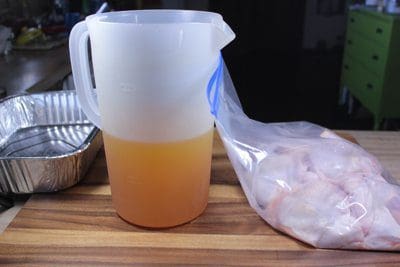
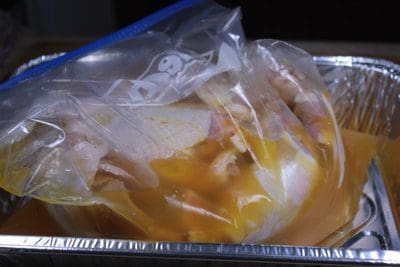
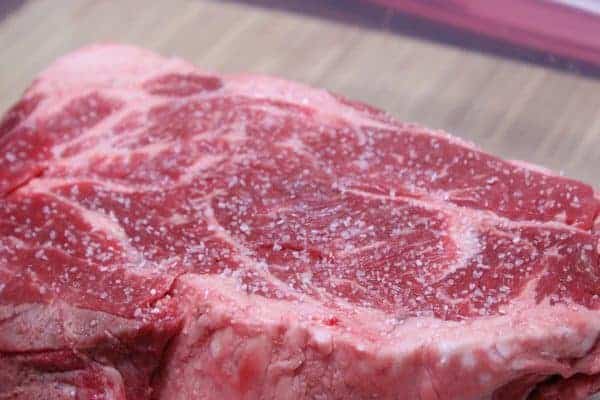
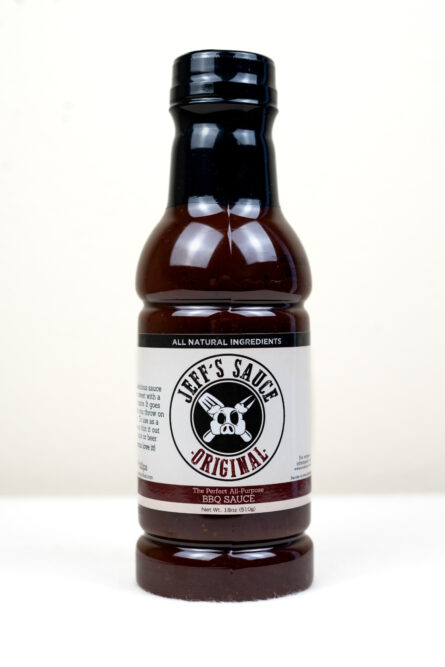
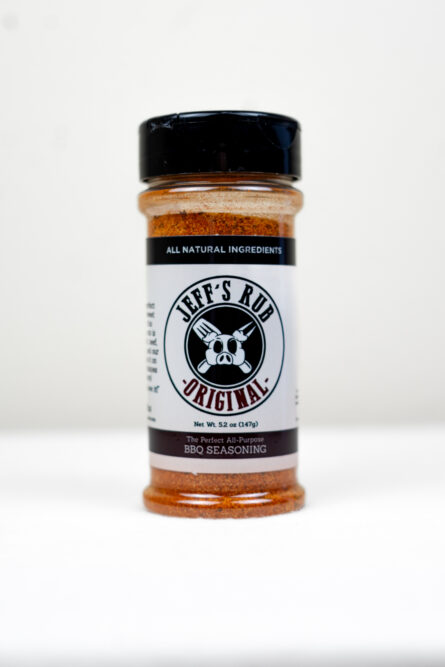
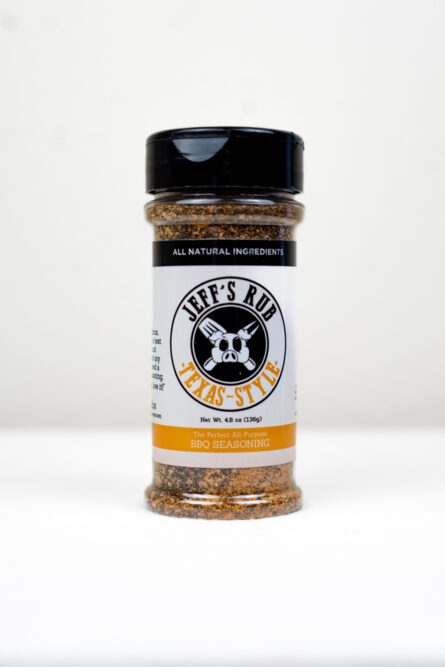
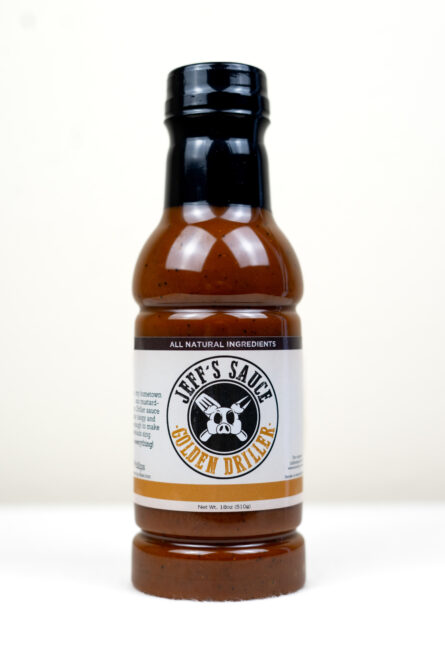
I noticed that you smoked a turkey breast in a cotton net. Do I need to alter your instructions if my turkey breast is netless with breastbone, ribs, and backbone with and empty center. Thanks
I have used the smoke tube for 3 years now love it. It’s used in Weber gas grill and Weber smokefire gen 2. I put the tube on the left side of both units. I light the tube standing up.
I have some moose meat that I intend to make into salt meat. My meat is frozen at this time, do I thaw out the meat completely before I cut into required pieces before adding to the brine.
Interesting comment about beef and brine.
Corned beef is basically brined beef. However it is brined for a very long time.
Pastrami is brined (4 days seems typical) and then smoked.
I am definitely interested in smoking Pastrami. I think my first experiment will be to smoke a store-bought corned beef and see how that goes.
Now that I know that brining can be done for shorter periods of time I’ll be trying some of the ideas here. THANKS
I buy Maple cure from PS seasonings in Madison, Wis.I use 2 cups per gallon of water and brine a turkey for seven days before smoking.Always comes out good. I wonder if the salt content of the M.cure is less. I always thought it was roughly 2 cups of salt &. cure.Your recipes & those of people I know use 1 cup salt per gal.and far less brining time & come out fine, I’m more confused now than I was 45 years ago when I started smoking.
How long is too long to brine meat?
Thank you.
My recipe for Turkey Brine:
Brine for 12 to 14 lb Turkey
8 cups apple cider
8 cups water filtered or bottle so not to taste of chlorine.
1 lb. kosher salt (1-3/4 cups if using Morton’s; 2-3/4 cups if using Diamond Crystal)
1-3/4 cups packed dark brown sugar
1 cup apple cider vinegar
3/4 cup honey
1/4 tsp. ground cloves
5 dried bay leaves
1 12- to 14-lb. turkey (preferably fresh, and not kosher or self-basting; neck and giblets, liver, removed for the broth)
Combine all of the brine ingredients and 8 cups of water in an 8-quart pot; bring to a boil over high heat, stirring occasionally. Remove from the heat, cool to room temperature, and then refrigerate until cold.
Brine the turkey
Put the turkey breast side down in a pot or tub large enough to hold it and the brine. Add the brine (the turkey will float, but that’s OK) and refrigerate for at least 6 hours and up to 20 hours.
I have used a large zip bag that held an 18 lb Turkey. I used a suction pump to pull out the excess air.
I have held in the Brine for 24 hours and as long as 36 for the 18 lb birds with great success
I’m going to be smoking two hams of about 16 to 20 lbs each and the Bacon slabs from a 250lb pig. Most bacon we see in a store are cured and smoked. Cured with sugars and salts.
This project will take place near this Thanksgiving so I may add a turkey to my smoker. I have a great brine I use on my birds the main liquid is apple cider. I usually soak a Turkey from 24 hours to 36.
I have thought about injecting the hams because soaking in a brine wash will not really infuse the salt and spices in to the meat.
I remember my Grandfather and my Father would brine hams for about 4 days before they started the smoking process. I can recall the smoking process but I was never abreast of the whole set up in the brine and soak recipe they used. I don’t recall what they did with the bacon. I do remember eating them and it was so much better than what we could get from a local chain store. The old family smoke house is gone. But I know it was around 8 x 10 walk in size. Built around the end of WW I.
I’m looking for some tips on the curing rubs or brine!
I plan to start a cold smoke. Start out with a low dry heat of 125 for two hours no smoke. Then induce the smoke. Smoke low at 125 for two hours then increase temp to 140 smoking all the time. Hold at 140 for two hours. Then increase the heat again to 160 with smoke. Holding this temp for two more hours. I’ll continue this process till I reach 190 degrees ambient air in the smoker. The Bacon would be finished by this time. The Hams will be smoked for several days.
If the grids went down I want to be able to preserve meat for those we care about.
I’ll be greatly thankful for any advice you share.
Im making chicken drum sticks in the smoker tomorrow. Any good seasoning tips or rub? I have them soaking likely 18hrs in kosher salt. I added alittle lawryers seasoning and garlic powder to water. First time smoking any kind of chicken
Thanks in advance
My husband and I where wondering if there is a way to keep meat fresh without freezing it. Do you know how long can you keep meat in a brine? Could you keep maybe a full pork loin in a brine for a while and use as needed? I did read that you did not see much of a difference when brining pork and beef however if the goal was more to keep the meat from spoiling, do you think or know if this would work?
We want to start smoking meats and I am very excited to have come across your website. I wasn’t aware anyone brined meat before smoking, apparently I need a lot more research. I have brined turkeys before and know how amazing they are. Also do you know if you can brine and then freeze meat?
I have your cookbook and am about to start my first brining and smoking experience! My question is this: Can I brine my pheasant, then rinse it (per the recipe) and then let it sit until I’m ready to smoke it or do I need to go straight from the brine to the smoker? Working backwards from the time we want to eat that would mean putting the bird in the brine at 2 a.m.
Amanda…. best to remove your pheasant after brining, and hanging it up in a cool airy place, out of sunlight until dry, wait until sticky or ‘tacky’ on the outside (called forming a “pellicule” in brining and smoking language) then smoke it…if you are cold smoking.
Hot smoking…..whoopee….just get it in the smoker immediately
Peter
I just bought my first smoker, and am looking for both homemade recipes for smoking ribs, and briskets. Turkey comes later in the year. Also has anyone ever smoked beats, and do you have recipes for that? I also would like to know about brining these items Thanks
Hey Jeff,
I want to use xfine Himalayan sea salt for my brine, each tablespoon weights in at 20 grams. For a normal brine you would use 1 cup of kosher salt, how much would I use with the sea salt.
Thanks in advance!
Greg
I use a masterbuilt, and I find that people tend to try to do too much with a brine before adding it to a smoker. Possibly it’s the smoker I’m using. I find that flavors of sweet, salt, and heat will come through the wood, but very little else. That is unless you are using almost all fruit wood. So I use salt, cayenne, a few pepper corns, a few allspice berries and a few bay leaves. That’s on poultry that will get a mixture or cherry and apple woods. And then I add apple juice to the drip pan. When roasting I use vegetable broth for some of the water, and salt. Keep that liquid to salt ratio the same as listed by Jeff.
Any thoughts on the loss of brine(or seasoning) flavors during smoking? Why is it that herb or savory flavors seem to just dissipate in the smoker?
For your brine ingredients listed above, what could you use instead of white wine? Not a big fan of the wine taste.
Hi Jim, though I am not the author of this article i’d like to give you my opinion on your question. I like to substitute Apple Juice or Apple cider for the wine. The acid (acidity) is what’s important with this ingredient.
-Ron
I have a 5 foot alligator. Is there a good recipe for brine for it. I plan on smoking it this week.
Does anyone use a vacuum marinator when cooking ?
I have one and just love it! Mine is a MARIVAC and is easy to use. Probably get one on ebay for a good price. Got mine at a yard sale. For beef, I use 1/2 cup ALLEGRO original marinade and 1 cup burgandy wine. Great on steaks on the grill. Super tender and deep flavor. You can invent your own recipies. Saves a ton of time.
Jeff I’ve got a leg of lamb I’m planning to smoke low and slow this sat.
It’s 2.5 kilos should I brine ? Any suggestions on rub (was thinking oregano, cumin , rosemary)
Thanks from the uk
I coat baby back ribs with rub and use the 2 2 1 method on an offset smoker at 220 degree temp, mopping every half hour with a secret mop sauce that contains beer, cider vinegar, concentrated frozen apple juice and a few other ingredients. The ribs come out with a nice bark on the outside and pink and tender on the inside. I do 6 racks at a time and vacuum bag and freeze the extras without sauce.
Marco,
Your recipe for baby back ribs with mop sauce using beer, cider vinegar, concentrate Apple juice and spices (?) – sounds delicious, especially the bark. Would you mind sharing recipe with me?
I’m totally new to smoking so curious about temperature and time per pound. Do I brine them first also or does the Apple juice and vinegar keep them moist n tender?
After brining a chicken, I've heard a second brine with buttermilk is really good. Any suggestions here? Straight buttermilk? For how long? Rinse afterward?
Thanks, Rod
Why not do them both at the same time? Add 1 cup of kosher salt to 1/2 gallon of buttermilk and 1/2 gallon of water and put the chicken in that for about 4-6 hours. Buttermilk tends to tenderize the poultry as it brines.
I use 1 cup of salt and 1 gallon of buttermilk (not diluted with water) on wild game to remove some of that “wild” flavor from it and tame it up a little bit. Everything from wild duck/turkey to frog legs to rabbit and it works great every time.
Can you use this goose, or would there be a better brine to soak in. Then smoke it or make jerky out of some breast ands smoke it
There is a restaurant in North Charleston SC. Fatz by name where buttermilk chicken is a regular item. Regardless to who has an old family recipe, this chicken tenderized using buttermilk cannot be topped. As brining increases moisture to poultry and provides an opportunity to add additional flavor, the technique cannot be improved on. However, buttermilk marinated chicken will not require brining.
The chicken once seasoned to taste, preferably under the skin if you don’t remove it, is the most excellent place to hide seasoning. Buttermilk soaking requires a minimum of 24 hours for optimal results. Frying is how I cook it afterwards. Remove from the buttermilk, batter and fry as usual. Careful your tongue will give your brain an injury! You will never go back you can dump KFC, Popeye’s and the rest. Trust me the tenderness meter and flavor will place your taste buds under arrest!
I was wondering if anyone here has tried Dry Brinning. I recently used it on a Tri Tip and even thought it was a bit over cooked it was the mosted Tri Tip I have ever cooked.
I made canadian bacon this weekend and it came out salty, The recipie that I followed called for 1 1/2 cups kosher salt to 1 gallon of water, plus pink salt, garlic, thyme, sage. Then smoked it for 4 hours. Next time can I cut the Kosher salt back down to 1 cup or do I reduce the brine time… 48 hours is what I brined it for.
Thanks
Try soaking in an iced water bath for a couple hours. Change the water and ice every half haour. Same process as brining only in reverse (osmosis). This will get out a lot of the salf from the curing process.
What do I change if I'm brining a 17-20 lb turkey?
just made this recipe tonight. it was great. brined the salmon in a simple water and salt brine for about 2 hours. used the brie, walnut and crabmeat stuffing. smoked at 220 on a brinkman electric smoker and the fish hit 145 after 40-45 minutes. came out perfect. used hickory and it was a pretty strong smoke flavor which i expected. might try applewood next time so that the other flavors are quite so overpowered by the strong smoke.
@ Jeff…that was awesome bro. I could not agree more. Thanks for setting him straight. Cheers from me and my family!
But my suggestion for quick non brine is dry rub 321 and glaze last hour extra sauce on side
I have followed for 7 years and love your monthly letter and most times I print each month letter and I have the recipe for the future. Your present news letter is not printable and I do not want to write it all down and I am very disapointed, because this months recipe sounds very good.
Carleton, from Prescott, AZ
Carleton, It does look pretty good, good enough in fact I have 2 Sockeye Salmon fillets thawing as we speak so I can try it out tomorrow.
As for the Brine, I smoke, BBQ, bake, broil and deep fry alot of salmon. In my opinion a simple water,salt and brown suger brine is the best way to go especially if you are smokin….
Southern Smokin – Alaska Style…or is that Alaska Smokin – Southern Style
If you can’t print it, you can always highlight the text you want and copy it (ctrl c) – then paste it into a word document (ctrl v). Hope this helps you.
Just to say I have heard great ideas and I am a quality chef in many aspects and I agree with the last persons wheel comment there is only so much altering of a basic sauce you can do before you become repetitive sweet baby rays is a great sauce and the 321 method is great!
One more question. Have you ever heard of making bacon out of venison? My neighbor asked me about it cuz he is a big deer hunter and I didnt know if you have ever done it.
Ok first off I rub my ribs with vinegar let dry put rub on them SMOKE 2-2-1 I only use bbribs. I like Jack Daniels chips best after smoke I fire my grill med low then the sauce I use Pig Foots I can't see wasting time trying to reinvent the wheel I let the sauce glaze the ribs (mahogny brown color). I use to steam my ribs but smoking is the way to go JM2cents. One more thing I use Pig Foots or Plow Boys rub you could say I am a little lazy but it works for me. I was also looking for info on poultry brinning but go side tracked
How long do you recomend smoking pork belly for bacon?
Geez you guys cooking ribs in store bought BBQ sauce is right up there with putting ketchup on steak. Its not real BBQ in any region. Rub, slow cook, and only then provide a finishing sauce when served.
I am not sure who you are referring to.. around here, sauce is almost always served at the table for those who like to dip and it’s homemade of course. We do have a rule here though, that says, “There are NO rules with Barbecue”. It is a very diverse type of food and I am not going to be the one that says if you don’t do things the way that I like them then it’s wrong. You should make things according to what YOU and your family likes and if you adore ribs smothered in sauce then smother them!
And of course, if you like ketchup on your steak, I might look at you funny but you go ahead and eat it the way you like it;-)
Let’s try to be a little more accepting of ideas that are different than our own. We don’t have to embrace them at our house but we do have to understand that not everyone likes the same type of things that we do.
MERICA!!!!!!!!
a good brine is great … I like to let the ribs soak a good 12 to 24 hrs…then slow smoke for about 3 hrs then turn temp to 225 for about an hr or untill you reach internal temp…then back to low smoke for about another hr…i also like to cover them in sweet baby rays from the begining and keep touching it up as you go…until you have about a nice quarter in. thick glaze…you can really taste the brine in the meat… if you do it right it makes for a great combination of flavors…i think the brine makes the ribs a bit juicier as well…
Yes, absolutly. I parboil the ribs in brine, then slow cook in Sweet Baby Rays BBQ sause (I have celiacs disease but SBR BBQ is tremedous)!
I know many folks who parboil ribs before they learn how great ribs can be with out making them all about the sauce. Ribs absolutely shine when they are given some time to spend in smoke, heat and lots of TLC. Sauce can be added but only as a compliment.. never as the main attraction.
For many folks.. this is all that is known but I am just saying there is a better way. Read some of the information on smoking ribs here on the website and give it a try. I guarantee that you will change your mind about parboiling;-)
Does anyone recommend brineing ribs before smokeing ?
I have brined them before and it’s ok but in my opinion, there’s no real need. to do this. There is plenty of fat within the meat and it tends to stay moist while it cooks if it is done correctly.
Many of us use the 3-2-1 method which is 3 hours on the smoker grates, 2 hours wrapped in foil then an additional hour unwrapped and on the grate again. This method creates ribs that are beyond amazing. This is for spare ribs. If you want to get the same result for baby backs, use 2-2-1 instead.
Instead of wrapping them, you can also just place them in a foil pan covered with foil and it works great and makes it really simple.